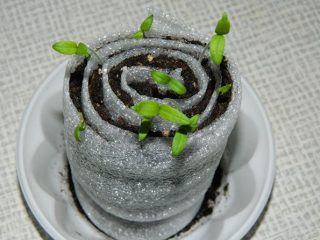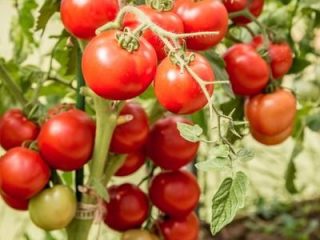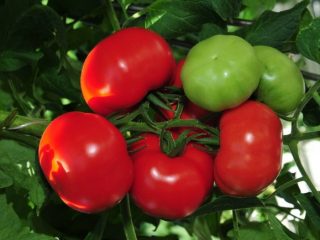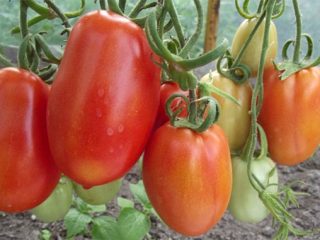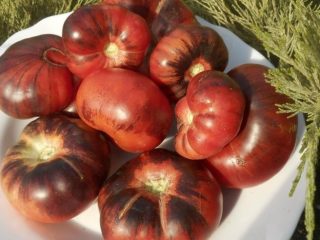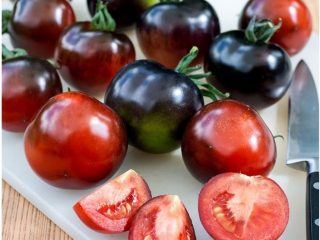Content
The characteristics and description of the Torquay tomato variety, presented by the copyright holder, allow you to get to know the culture better. The variety can be grown in open and closed ways both on a personal plot and on farm fields. Torquay F1 has been cultivated since 2007. This is a high-yielding, unpretentious variety, popular among vegetable growers.
History of selection
This variety of tomato was bred for industrial cultivation in Holland. The copyright holder and official distributor is the agricultural company Beio Zaden B.V. Torquay F1 is not adapted to the Russian climate. It can be grown in open ground only in the Krasnodar and Stavropol Territories, in the Rostov and Vologda regions. In other regions, cultivation in greenhouses is recommended.
Description of the tomato variety Torquay
The first generation hybrid Torquay F1 is a determinate tomato with a powerful root system and intense foliage. The growth type is standard, the formation of lateral shoots is minimal, the plant practically does not require pinching.
The tomato is a mid-early, heat-loving tomato; when the temperature drops to +100 C, the growing season stops.

Torquay F1 is demanding on lighting
Special lamps are installed in greenhouses to extend daylight hours to 16 hours. The harvest is harvested in two stages, the first tomatoes ripen in June, the next wave occurs in July-August. From the moment of germination to the ripening of the last harvest, 120 days pass, the first is harvested after 75.
All tomatoes have an even mass, the density of the brushes is the same from the first circle to the last.
The tomato bush Torquay F1 (pictured) has the following characteristics:
- Height – 80-100 cm, which is considered tall for a determinate species. The bush is compact, densely leafy.
- It is formed by one central stem, thick, rigid in structure, stable. Torquay F1 is not a bush form of the crop, so it requires fixation to a support. Under the weight of the fruit, the stem bends and the lower branches can lie on the ground.
- The leaves are medium-sized, lanceolate, arranged on long petioles, 4-5 each.
- The leaf blade is dark green with a pronounced network of veins on the surface, slight pubescence (mostly in the lower part).
- Fruit clusters are simple. The first is formed after the second sheet and after two - the subsequent ones. Density 5-7 ovaries.
- Blooms with small yellow flowers. Hybrid Torquay F1 is self-pollinating.
The root system is taprooted and compact. Due to the structure of the root, the tomato is drought-resistant and does not take up much space. 4 seedlings are placed per 1 m2 without thickening the planting.
Description of fruits
Tomatoes of the hybrid Torquay F1 are cylindrical or plum-shaped, can be slightly elongated or more rounded. The fruit clusters are densely spaced, all of the same size.
Biological characteristics:
- diameter – 7-8 cm, weight – 80-100 g;
- the peel is dense, thick, not subject to mechanical damage and cracking;
- the surface is smooth, glossy with a matte tint;
- the pulp is red, juicy, at the stage of technical ripeness there is white pigmentation of the fibers;
- three chambers, not many seeds, after they ripen, voids may form.
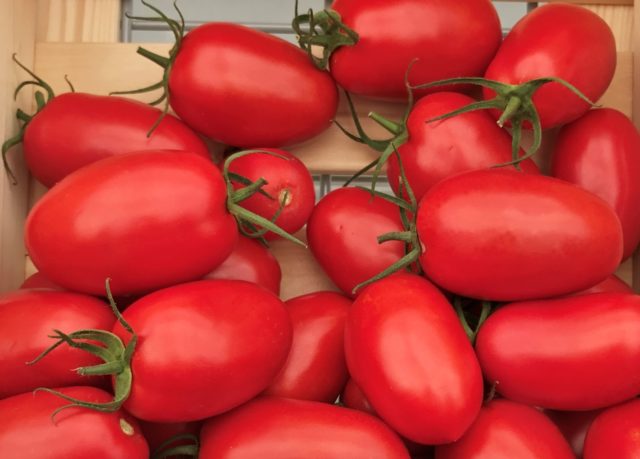
Table tomatoes, sweet and sour taste, not pronounced aroma
Characteristics of Torquay tomato
During the process of hybridization and experimental cultivation, all shortcomings were taken into account. The result was a hybrid with high productivity, standard agricultural technology and good drought resistance.
Tomato yield Torquay F1 and what affects it
For the determinate type, the tomato is tall and forms up to 7-9 bunches. The average density of each is 6 tomatoes, 100 g each; the fruiting rate per bush is 4.5-5.5 kg. If 4 plants are planted per 1 m2, the result is 20-23 kg. This is a fairly high figure, which depends on the duration of lighting in the greenhouse, fertilization and watering. On the site, the plant is placed in a sunny place and fed. In general, the Torquay F1 hybrid is characterized by stable fruiting even in the rainy season.
Resistance to diseases and pests
Hybrids are resistant to infection. In greenhouses, when ventilated and maintaining average humidity, tomatoes do not get sick. In an open area, the development of late blight and tobacco mosaic is possible.
Of the pests, Torquay F1 is affected by those insects that are common in the region. These are the Colorado potato beetle and spider mite; aphids can be observed in the greenhouse.
Area of application of fruits
Tomatoes for industrial and commercial use are mainly used for processing. Tomato paste, juice, puree, and ketchup are produced from it. Fruits grown in the garden are used in any culinary recipes. Tomatoes are consumed fresh, canned, and included in any homemade preparations for the winter. The tomato does not crack after hot processing.
Advantages and disadvantages
Hybrid varieties have no particular disadvantages; all weaknesses of the culture are eliminated when a new variety is created. The only disadvantage of Torquay F1 is that the tomato is heat-loving and has low stress resistance.
The advantages include:
- the fruits are of the same mass and ripen together;
- the bush is compact and does not take up much space;
- high-yielding hybrid, stable fruiting;
- early ripening, long harvest period;
- suitable for cultivation in farm fields and summer cottages;
- tomato is self-pollinating, grown indoors and outdoors;
- good taste characteristics;
- can be stored for a long time and is transportable.

Torquay F1 hybrid tomatoes retain their presentation for three weeks
Features of planting and care
Tomatoes are grown using purchased seeds. They do not need preliminary disinfection; they are treated with an antifungal agent and a growth stimulator before packaging. The Torquay F1 hybrid is cultivated in seedlings. For planting over large areas, seeds are sown in a greenhouse in March. Maintain temperature +22-25 0C. After the appearance of two true leaves, the seedlings dive and are planted in the fields when 5 leaves are formed.
For home growing:
- Sow seeds in containers filled with fertile mixture.
- After laying the material, the surface is moistened.
- The container is covered with glass or film.
- After the tomato germinates, the containers are opened.
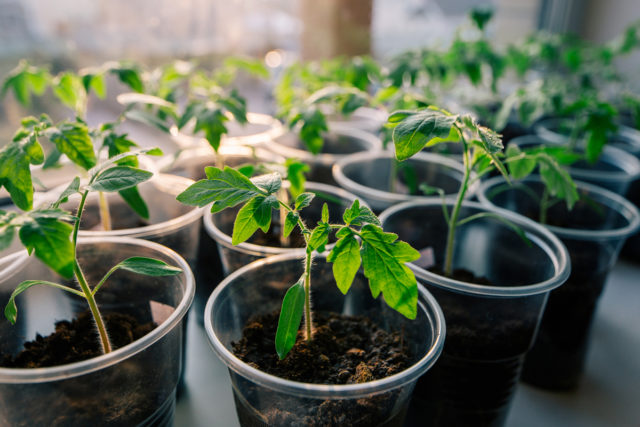
Plants are transplanted into the garden bed in the spring, when the temperature has stabilized at +150C
The greenhouse can be placed in early May. If the structure is heated, then in April. The planting area is dug up, compost, peat and a complex of mineral fertilizers are added. Place the seedlings at intervals of 45-50 cm. After planting, water generously.
Growing hybrid Torquay F1:
- When the tomato enters the budding phase, it is hilled and mulched.
- If there is no rainfall for a long time (in an open area), water twice a week. The soil moisture is maintained in the greenhouse to prevent the root ball from drying out.
- Remove weeds and loosen when a crust forms on the soil.
- Stepping for a standard type is not relevant.
- Particular attention is paid to feeding. It is carried out in the spring before flowering with nitrogen agents. At the time of fruit set, phosphate is added, when the tomatoes begin to ripen, they are fertilized with potassium. 15 days before harvesting tomatoes, all fertilizing is stopped; only organic matter can be used.
Pest and disease control methods
For the Torquay F1 hybrid, prevention is necessary:
- observe crop rotation, do not plant tomatoes in one area for more than 3 years;
- do not place the bed near nightshade crops, especially next to potatoes, since the Colorado potato beetle will be the main problem for tomatoes;
- treat the bushes with copper sulfate before flowering;
- During the formation of ovaries, Bordeaux mixture is used.
If the tomatoes show signs of late blight infection, the problem areas are cut off and the tomato is sprayed with Fitosporin. “Barrier” is effective against tobacco mosaic. For the Colorado potato beetle, “Prestige” is used; in the fight against spider mites, “Karbofos” is used.
Conclusion
The characteristics and description of the Torquay tomato variety given by the copyright holder are completely true. The plant produces a good, stable harvest of universal fruits with high gastronomic qualities. A crop with conventional agricultural technology, drought-resistant. It is grown in greenhouses and open methods.
Reviews of tomato Torquay F1

